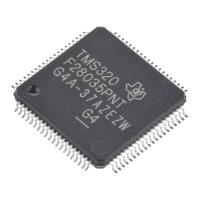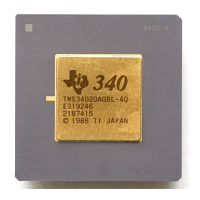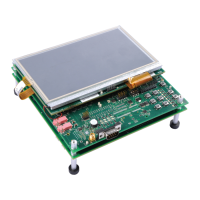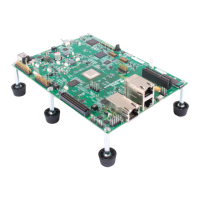Start
ΔQ Calculation Complete
OCV Table
Does measured OCV
align with the OCV
table
CellVoltage 1…2()
Yes
No
Lookup DOD % values for each
cell
Calculate ΔDOD% between each
cell and the highest DOD cell
Linear Interpolate DOD % values
for each cell from closest stored
OCV data
ΔDOD% x QMAX per cell
QMAX per
Cell
ΔQ (mAh)
per cell
Figure 7-3. ΔQ Calculation
The BQ28Z610-R2 calculates the required balancing time using dQ and Bal Time/mAh Cell 1 (for cell 1) or Bal
Time/mAh Cell 2. The value of Bal Time/mAh Cell 1 and Bal Time/mAh Cell 2 is fixed based on key system
factors and is calculated by:
Bal Time/mAh Cell x = 3600 mAs/(DUTY × (1000 mV / 1 V) × V
CELL
/(R
VCx
+ R
cb
))
Where:
V
CELL
= average cell voltage (for example, 3.7 V for most chemistry)
R
VCx
= external resistance in series between the cell and the pins of the BQ28Z610-R2. In the reference
schematic, R
VC2
= 105 Ω and R
VC1
= 100 Ω.
R
cb
= cell balancing FET R
dson
, which is 150 Ω.
DUTY = cell balancing duty cycle, which is 68.75% typ.
Cell balancing time for each cell to be balanced is calculated by: dQCelln × Bal Time/mAh Cell 1 for
cell1 or and dQCelln × Bal Time/mAh Cell 2. The cell balancing time is stored in the 16-bit RAM register
CellnBalanceTimer, providing a maximum calculated time of 65535 s (or 18.2 hrs). This update only occurs if a
valid QMax update has been made; otherwise, they are all set to 0.
The CellnBalanceTimer registers are clamped at 0xFFFF and cannot roll over.
Cell Balancing www.ti.com
46 BQ28Z610-R2 SLUUCO0 – APRIL 2022
Submit Document Feedback
Copyright © 2022 Texas Instruments Incorporated
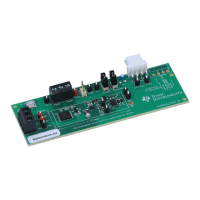
